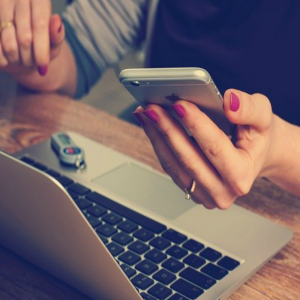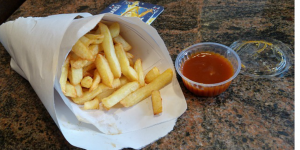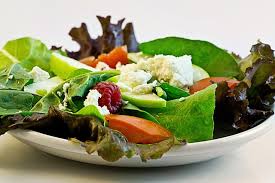
Is the reason that there has been an increase in obesity due to the fact that adults in today’s society are lazy? Are we all just a bunch of lethargic couch potatoes that don’t do anything but sit around and eat all the time? I say no. Instead we are a product of our revolutionary, technological society. I am not saying we can blame technology, rather I am saying that as with our youth, the adults are also a reflection of the society that surrounds them. It isn’t an excuse, but it is a thought I pondered based on my typical day.
I get up in the morning, not to the sound of an aggravating buzz, beep, or the blaring of the radio. These alarms would get my blood racing right from the start, but I would hit snooze to stop the insanity. Then it would happen again, and again, the snooze bar. After a few times of this I am would now be late for work, rush to the shower if I even had time, rush to the car, and speed off to work. Not in today’s world. Instead, I wake to the soothing sound of the ocean on my Homedics radio and slowly wake peacefully. No blood pumping, no increased heart rate. I just have a nice and slow, easy awakening. Next I head to the shower where I put turn on my shower CD player and listen to something that I enjoy while I take my time letting the water almost run cold.
During my toweling off and getting dressed period of the morning, I can hear my coffee being made on the coffee maker that is set to make me a cup every morning with me not having to do a thing. While I sit and drink my coffee pondering the day ahead of me, I notice that it is almost gone, so I gently push a button on my key ring that starts my car and gets it nice and warm for me before I even get to it. I can then take my leisurely stroll to my car, get in, and have a nice peaceful drive to work (barring any unforeseen road rage). Nothing like before when I had to run to my car because I was late most of the time due to the annoyance of my alarm or run because it was cold and then get in and shake and shiver for 10 minutes until it warmed up.
Once at work I find myself taking out my PDA and seeing what is on my agenda for the day. Nope, no more flipping through pages of my pocket calendar or scheduler. My work day is simple and uneventful, but instead of having to run back and forth through the office to get messages to everyone, I can now simply send an interoffice email with the push of a button. When it is time to leave, I again start my car from my office and drive home.
Arriving at home, I put in a microwave dinner that doesn’t have to be chopped up, cut up, stirred, blended, kneaded, poked, or even prodded. Push a few buttons and five minutes later I am sitting in front of the TV watching the shows I recorded on my cable’s digital recorder and eating my five minute, nuked meal. Would I have done this in the past? The answer is no, because I would have had to physically make something to eat, and there wouldn’t be anything on TV worth watching, so I would eat and go do something like yard work, clean the house, play with the kids, whatever, just something else to occupy the time. Oops, while I was eating, I got some crumbs on the floor and then dropped some more on the way back to the kitchen. Oh well, I will just push the button on my robot vacuum cleaner and let it clean the whole floor as it is preprogrammed to do.
Finally, my day is coming to an end and instead of doing something really constructive before I go to bed, I can’t resist the opportunity to surf the Internet for a little while, maybe chat to some friends or relatives, and check my email. Besides, I have to plug in my PDA to the computer anyway. Now my lazy or technologically dysfunctional day is complete.
This whole story brings me back to my question that started the whole thing. Am I lazy or am I just a product of my environment. It is this author’s opinion that I am both. Years ago, even the simple things like making the dinner would be exercise, but now it is too easy because it is done for you in a box. Everything today is easy and most adults are on the heavy side, because things are easier and don’t take as much energy. That doesn’t mean we in society are lazy, it means we don’t have to exert ourselves as much to accomplish the every day routines that are needed to complete the day. However, I could stop by the gym on my way home, or go for a walk after dinner, so I am also lazy too. The Internet just pulls me in night after night and I can’t seem to make myself do anything else after dinner. Shame on you technology for holding that gun to my head!
Brad G. Morris


